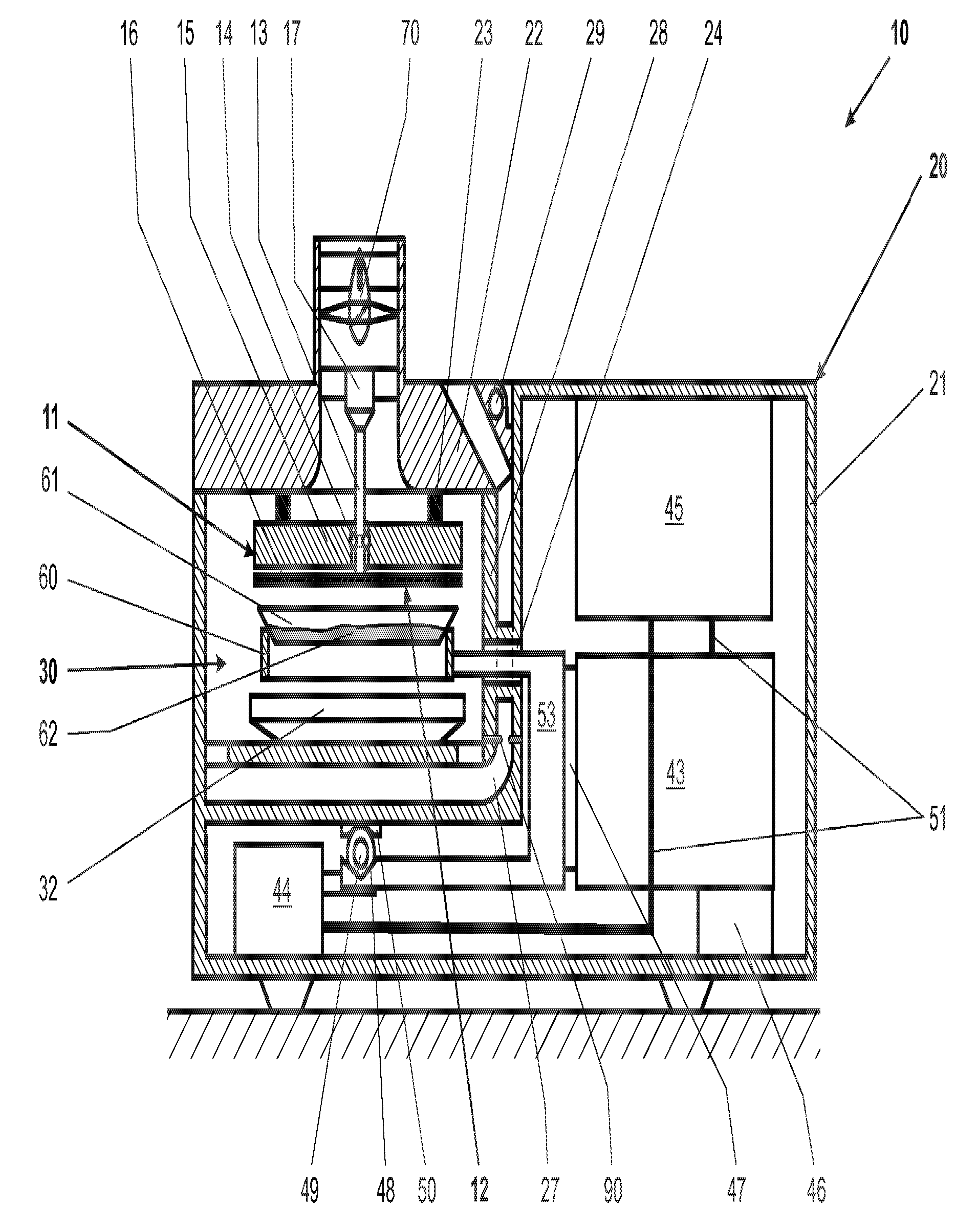Measuring instrument for gravimetric moisture determination
a gravimetric and moisture measurement technology, applied in the direction of instruments, material moisture content, weighing by absorbing components, etc., can solve the problems of thermal breakdown of samples, high cost and error, and limit the accuracy of commercially available instruments, so as to measurement, improve the accuracy of measurement, and reduce the uniformity of radiation distribution over the radiation-releasing surface
- Summary
- Abstract
- Description
- Claims
- Application Information
AI Technical Summary
Benefits of technology
Problems solved by technology
Method used
Image
Examples
Embodiment Construction
[0047]FIG. 1 shows a sectional view of a measuring instrument 10. The measuring instrument 10 has a housing 20 in which a test compartment 30 is arranged. The housing 20 is divided into a movable housing part 22 and a stationary housing part 21. Arranged in the stationary housing part 21 are a weighing cell 43, a calibration-weight-handling mechanism 44, and at least one electronic module 45, all of which are connected to each other by communicating means 51. The electronic module 45 contains at least one signal-processing module that is not shown in detail, and possibly also a control- and / or regulation module. The weighing cell 43 has at least a stationary portion 46 and a load-receiving portion 47. Known types of weighing cells are for example elastically deforming bodies carrying strain gauges, or weighing cells based on the principle of electromagnetic force compensation, or weighing cells with oscillating strings, capacitative weighing sensors and the like. The stationary port...
PUM
| Property | Measurement | Unit |
|---|---|---|
| surface roughness | aaaaa | aaaaa |
| angle | aaaaa | aaaaa |
| slope angle | aaaaa | aaaaa |
Abstract
Description
Claims
Application Information
 Login to View More
Login to View More - R&D
- Intellectual Property
- Life Sciences
- Materials
- Tech Scout
- Unparalleled Data Quality
- Higher Quality Content
- 60% Fewer Hallucinations
Browse by: Latest US Patents, China's latest patents, Technical Efficacy Thesaurus, Application Domain, Technology Topic, Popular Technical Reports.
© 2025 PatSnap. All rights reserved.Legal|Privacy policy|Modern Slavery Act Transparency Statement|Sitemap|About US| Contact US: help@patsnap.com



